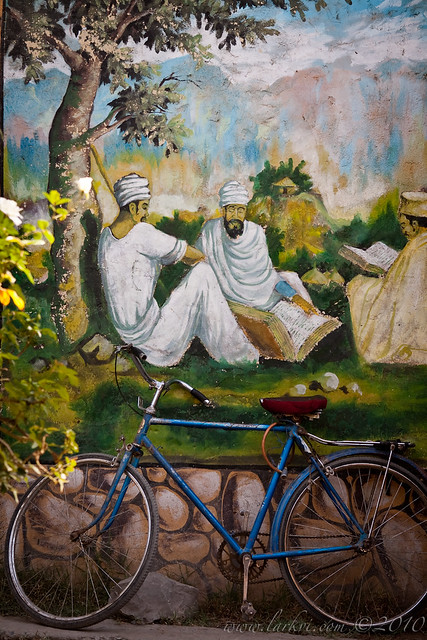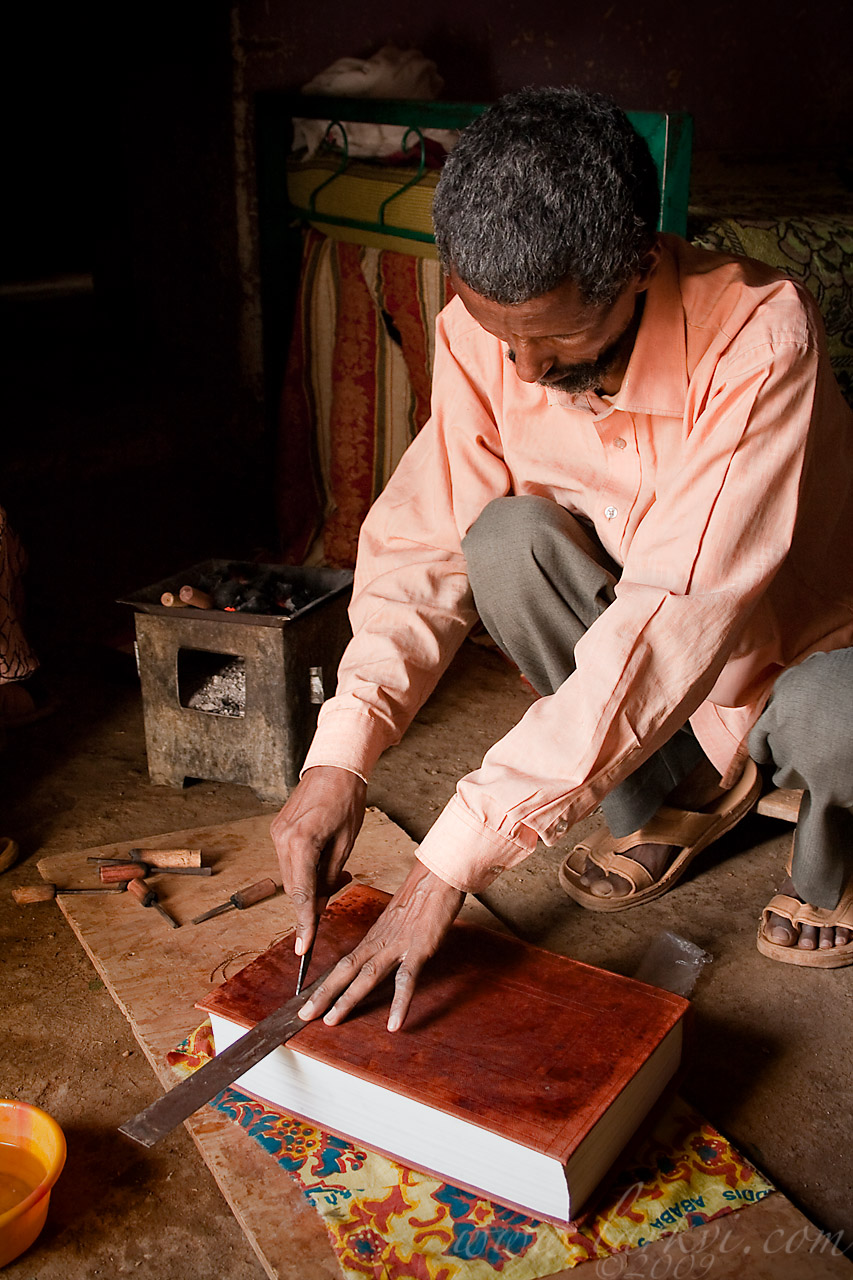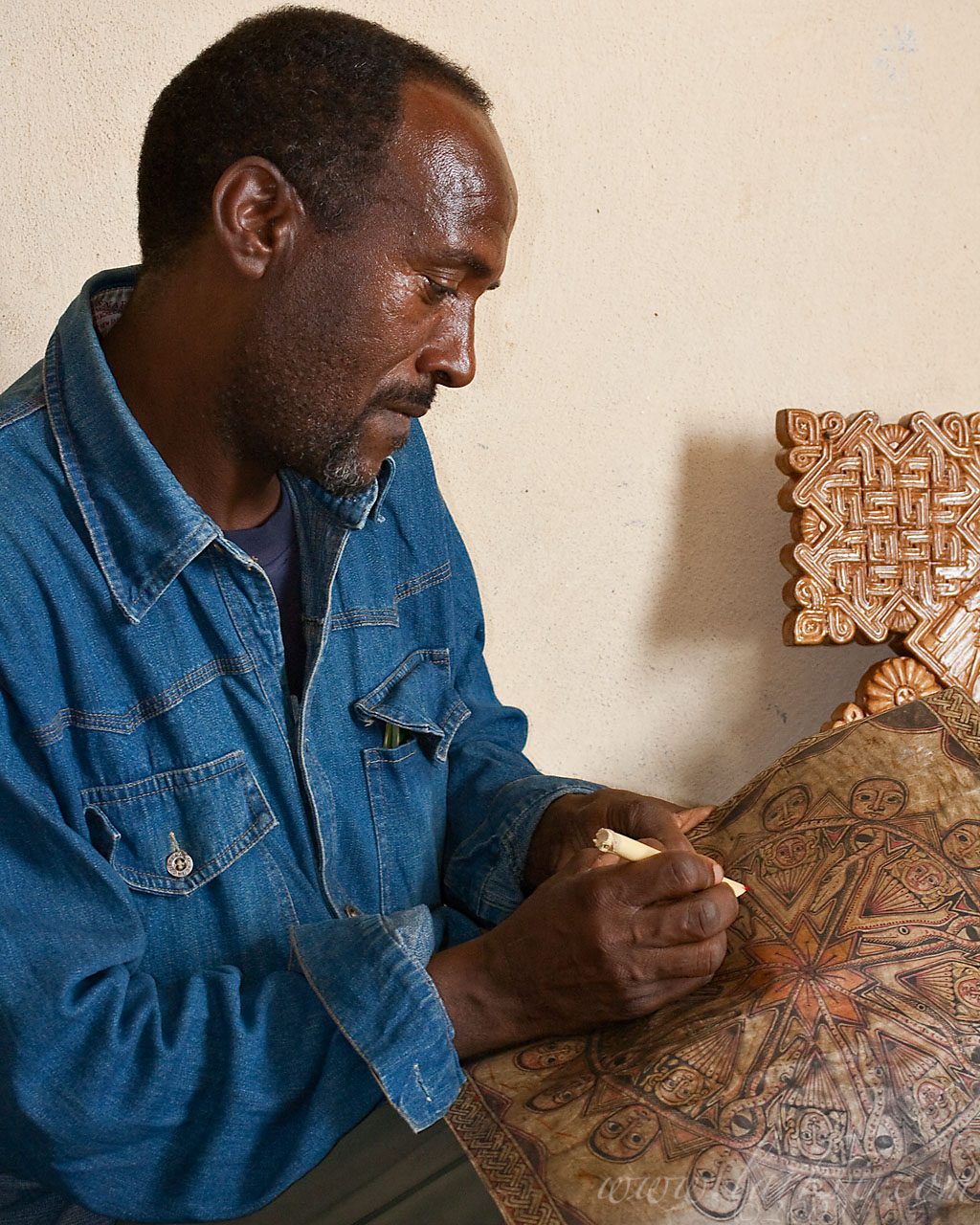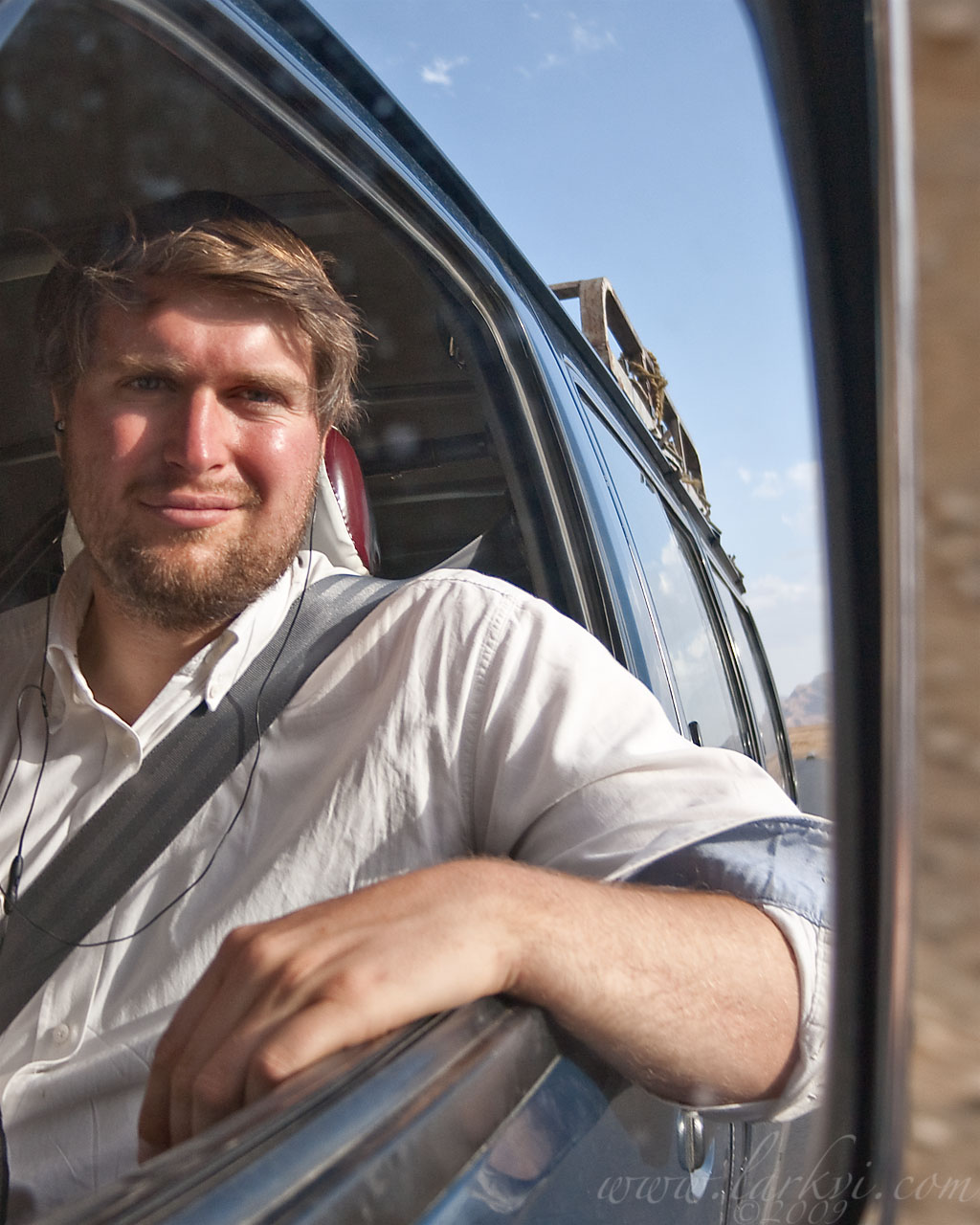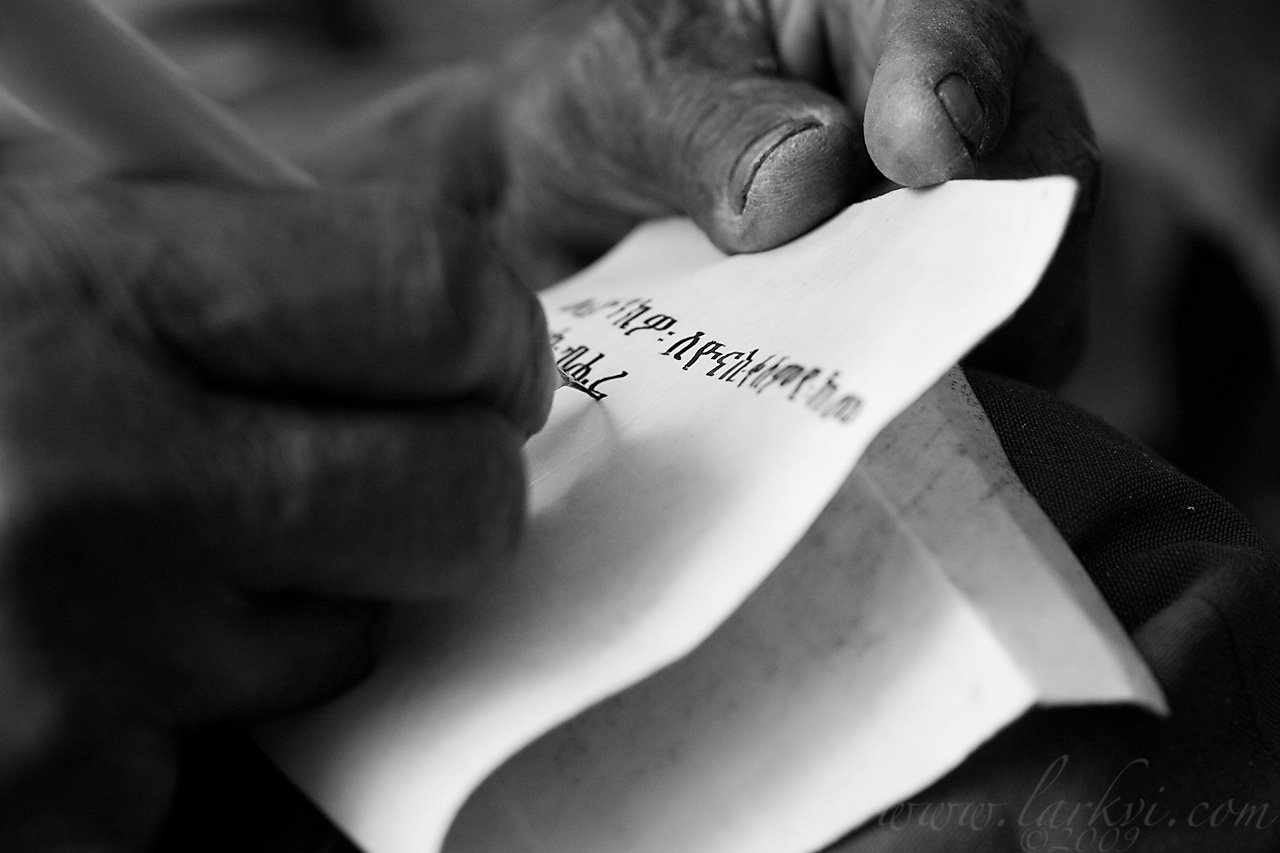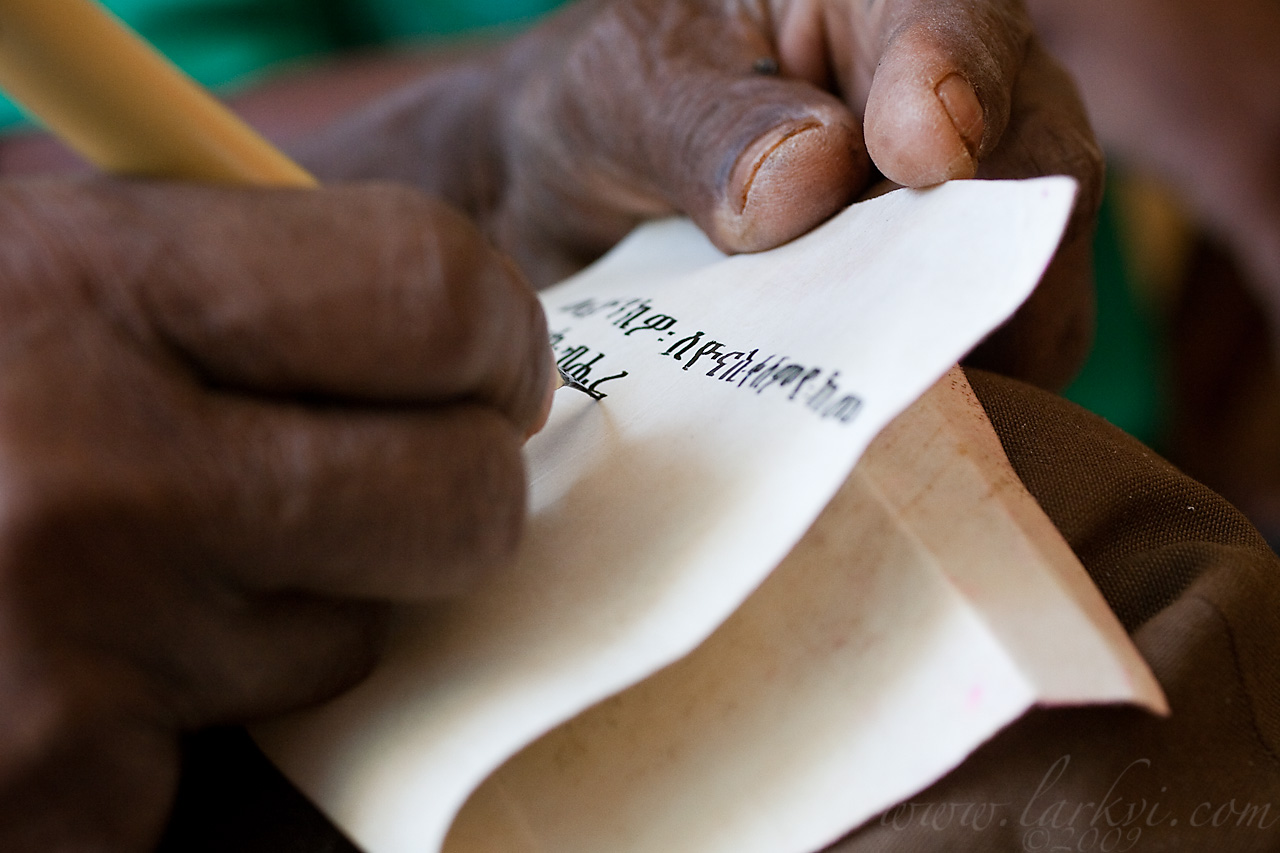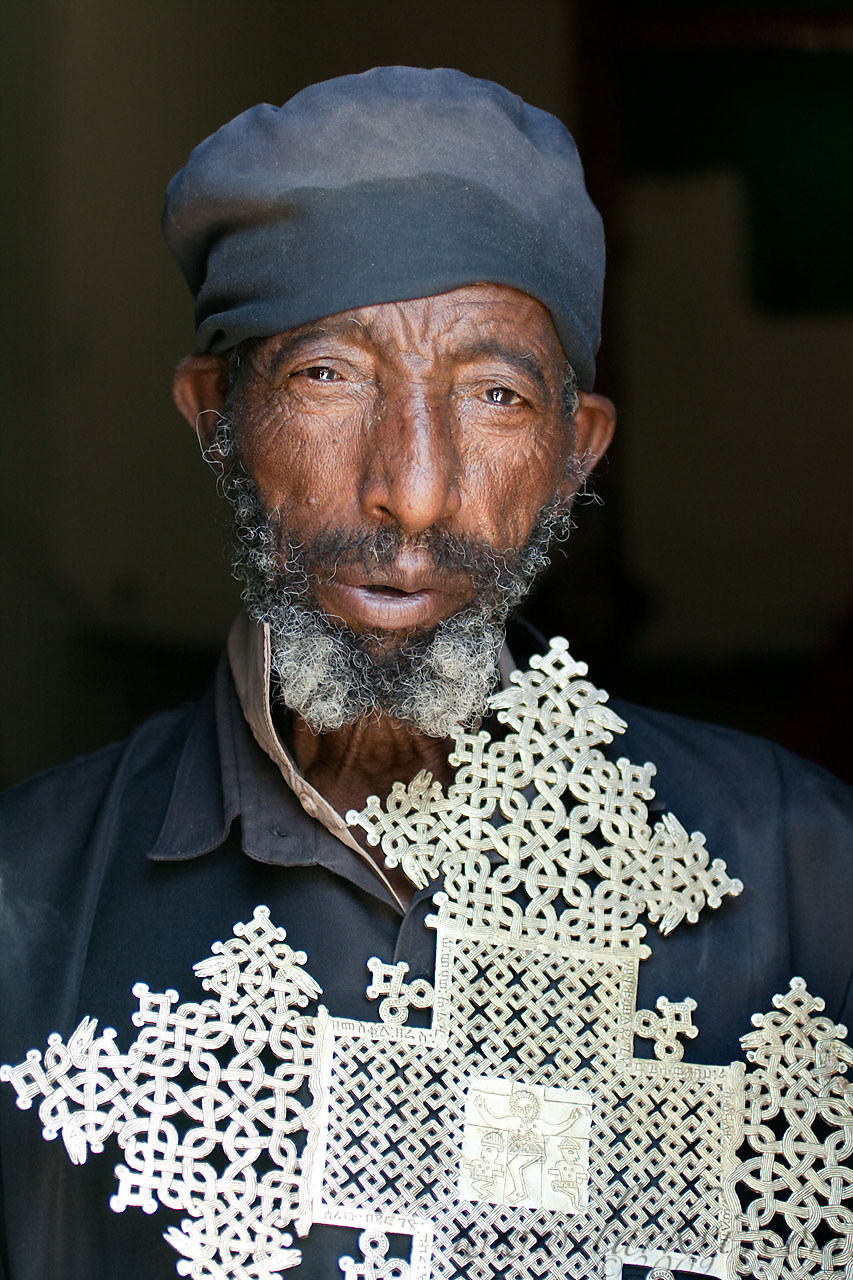A cat sits leashed to its stand, at the prouduce section of the main market in Mek’lele.
Tag: Mek’ele
Cafe Scene, Mek’ele, Tigray, Ethiopia, 2009
Legumes, Old Market, Mek’ele, Tigray, Ethiopia, April 2009
Binding, Marigeta Birhanu, Mek’ele, Tigray, Ethiopia, April 2009
Keshi Mengistu Eyesus, Mek’ele, Tigray, April 2009
Keshi Mengistu Eyesu is a woodworker, scribe, and painter working in Mek’ele. He is a consummate artist, and, though he focuses on woodworking (more profitable) now, his scribal works are excellent. Though he produces them with an ink wash, to "antique" them, they need no selling as antiques, as they are excellent modern examples of traditional Ethiopian art (I’m thinking of buying one myself). Here you can see him finishing off a healing scroll with red detailing, while a carved wooden processional cross of his production sits in the background.
Magic scrolls exist in a continuum with church scrolls in Ethiopian Christianity. As in many societies with low literacy rates, writing is associated with the ability to perform magic. In a Christian society like Ethiopia, this is doubly so, as people are familiar with the magical/miraculous abilities granted to the priesthood through the recitation of written documents of the Church. The learned liturgical specialists of the Church, däbtäras, are also suspected as magicians–the word for magician is däbtära–because they have access to knowledge which is secret, both because it requires literacy, and because it is actually secret. Church scrolls, containing prayers invoking the names of angels, Jesus, and the BVM transition into magic scrolls when, in order to grant additional power or a different kind of power, the secret names of devils, demons, and magical entities are used. Apparently, some of these names are written invisibly in a process that I was poorly able to understand, though I am working on it. In addition to scrolls, Ethiopians keep alive a tradition of amulets, both those familiar from Orthodox Judaism, containing biblical passages, and those of a less religious and more magical nature.
Ten Days into the Research Trip, Tigray, Ethiopia, April 2009
Me, sun-burned from a day-trip to Negash and ten days in the harsh Tigrinyan sun, heading back to Mek’ele at the end of the day.
I visited the Negashi mosque and the Bet Ammanuel Maakos (Markos? It’s what the sign says.) Church, which I shall post photos of soon. The headphones are for my iPod, which allows me to listen to iTunesU courses and the Best of CBC Radio’s Ideas podcasts which I downloaded when I still had fast internet. If you are traveling (or even if you aren’t)–I highly recommend both as a great way to pass large blocks of time while educating oneself.
Writing (B&W), Marigeta Haile Selassie, Mek’ele, Tigray, Ethiopia, March 2009
Writing, Marigeta Haile Selassie, Mek’ele, Tigray, Ethiopia, March 2009
I normally do not publish photos from my research work, but I have decided to try making them a little more artistic, and will attempt to get some good ones up here.
In this one, Marigeta* Haile Selassie, writing out a short phrase as a demonstration of pen-technique. Notice that he holds the pen at nearly a 90-degree angle from the page, a position dictated by the nearly-90-degree cut he made of the nib, with a slight angle to allow right-handed writing. He is working on his knee, sitting on a small stool in the corner of his shop, next to the window. The pen is made out of bamboo, two species of which are native to Ethiopia.
*The title, which basically translates as ‘Master,’ refers to having completed a certain level of traditional Church education–‘temhert’–the focus of which is the memorization of Church books. The level above it would be ‘Memhir,’ which means ‘traditional church teacher.’
Abba Mäsälä, Debrä Genet Medhane Alem, Mek’ele, Tigray, Ethiopia, March 2009
I am in Mek’ele, the capital of Tigray, the Northern province of Ethiopia, interviewing scribes and other manuscript craftsmen. I took the opportunity to visit the treasury of Debrä Genet Medhane Alem monastery, which has a number of deluxe manuscripts presented by Atse (Emperor) Yohannes IV, who brought Mek’ele to prominence by establishing it as his capital (Ethiopia’s capital has changed a number of times). Abba Mäsälä is the treasurer of the monastery, and when he was putting away the books, I asked if I could take a photo of him. He ran upstairs to the treasury, to get his favorite processional cross, before he was ready to pose for a couple quick photos.


